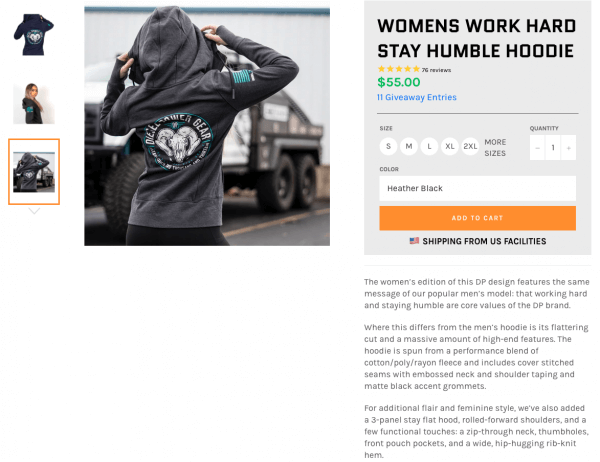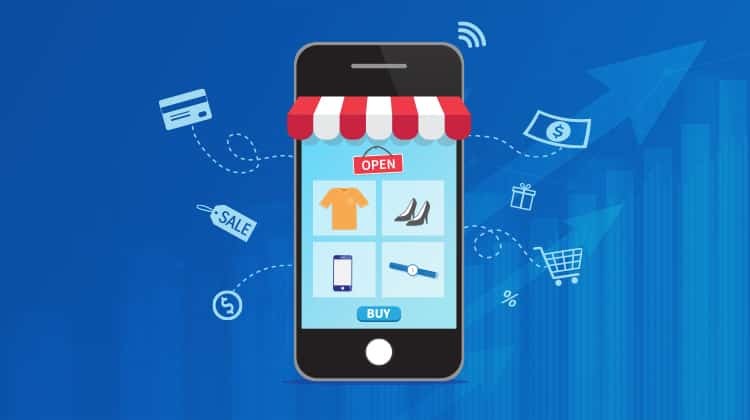Ecommerce in 2020: 7 Trends You Can’t Afford to Ignore
by Aden Andrus • August 31, 2020
It’s been a pretty wild year for ecommerce. Wait, strike that. It’s just been a wild year. Period.
From the pandemic to protests and everything in between, something significant has happened in 2020 that has affected just about everyone.
Regardless of how 2020 has affected you personally, though, if you’re in ecommerce, it’s certainly affected how you do business. If you’re lucky, most of these changes have been changes for the better, but there have still been a lot of challenges to tackle and overcome.
In this article, we wanted to take a step back, look at what’s been happening in the world of ecommerce and give you some expert advice on how to handle the various changes, challenges and opportunities you’re facing.
To do that, I’ve called in Disruptive’s own in-house ecommerce experts. Between them, they have decades of experience in the industry and they keep close tabs on exactly what is happening—and what it means for our clients.
So, with all of that in mind, let’s talk about what happening in ecommerce this year and what you need to do to make sure your business comes out on top.
COVID-19 is Changing Ecommerce
Whether you’re a staunch supporter of masks and social distancing or think COVID-19 is all some sort of conspiracy theory (or, like most of us, you don’t really know what to think), one things for sure: COVID-19 is changing the world of ecommerce.
With his experience as both an ecommerce business owner and Disruptive’s Chief Revenue Officer, Daryl Klingaman has been keeping a close eye on just how deeply those changes are affecting your customers.

“To compete online, retailers have to get as close to Amazon’s offerings as possible—or have really strong value props that Amazon can’t deliver.”
Daryl Klingaman
Chief Revenue Officer
Disruptive Advertising
In his experience, quarantine restrictions across the world have forced people to figure out new ways to get the things they want. The average buyer has been trained over the past several months to purchase more things online than ever before. As a result, their trust in buying digitally has increased out of necessity.
In addition, buyers are also trained to expect more and more when buying online. Amazon holds the keys to driving consumer expectations, and they’re becoming accustomed to 1-day free shipping, free returns, buy and try it before paying, etc. To compete online, retailers have to get as close to these offerings as possible—or have really strong value props that Amazon can’t deliver (good luck!).
Adapting to Your Customers’ Expectations
As customer expectations change, ecommerce businesses need to change, too. If people have to pay for your shipping, wait for weeks for their product to arrive or deal with a frustrating returns policy, you’re going to lose their business to a more accommodating competitor.
To put it simply, to survive in today’s fast-paced ecommerce climate, your business needs to be the easy, obvious solution. Your products need to be easy to find, easy to buy, easy to return and—most of all—an easy alternative to big sites like Amazon.
How do you manage all of that? Well, it’ll take some work, but here are a few easy ways to get started (and for even more tips, check out this article):
1. Take Paid Search Advertising Seriously
While many ecommerce businesses tend to fixate on paid social advertising channels like Facebook and Instagram, it’s important to remember that as people buy more frequently online, a lot of their purchases will start with a Google search.
This is why optimizing and improving product feeds has become such a big area of focus for Patrick Francom—one of Disruptive’s top ecommerce marketing consultants—this year.
Many of your customers already know that they want what you’re selling. You just need to be easy for them to find.
Google Search Ads—especially on Google Shopping—are a great, easy way to get in front of people when their purchasing intent is highest.
So, if you haven’t doubled down on your paid search advertising strategy in a while, now is a great time to get serious about Google Ads. The ROI is often insane compared to higher-funnel channels like Facebook Ads, so the results are almost always worth the effort.
2. Flesh Out Your Funnel
One of the reasons why paid search ads are so effective is because they target the bottom of the funnel. By the time people are searching for your products online, they know what they want…they’re just trying to decide which business to buy from.
However, it often takes a lot of exposure, consideration and learning for a potential customer to reach that level of purchasing intent.
According to Court Iorg, one of Disruptive’s lead ecommerce marketing consultants, there’s a direct correlation between the number of marketing channels businesses invest in and their overall marketing success rate.

“Right now, companies that have the ability to take advantage of all channels, Facebook, Instagram, Google, Pinterest, and have data for them all are clearly outperforming companies that are only working through one channel.”
Court Iorg
Marketing Consultant
Disruptive Advertising
The trick is to view all of your marketing channels as part of one united customer journey.
For example, according to Court, Disruptive’s most successful clients understand that their paid social ads are a fundamentally higher funnel marketing channel. They don’t have the same performance expectations for paid social advertising as they do for, say Google Ads, but they also recognize that their Google Ads performance is directly influenced by the money they’re spending on paid social.
The better you understand your overall marketing funnel and how each marketing channel fits into your buyer journey, the easier it is to figure out what messages your customers need at each step in their journey. It takes time, testing and data to figure all of this out, but it’s the only way to ensure that your customers are seeing the right ads at the right times.
3. Stop Worrying About Your Checkout Experience
As people get more and more used to making purchases online, the specific details of your checkout experience matter less and less. This is a bit counterintuitive for many ecommerce marketers.
After all, with almost 70% of online shopping carts left abandoned, the only possible explanation is that otherwise excited would-be customers are being turned off by some aspect of the checkout experience…right?
Well, according to Trevor Anderson, Disruptive’s Director of Conversion Rate Optimization (CRO), things usually aren’t that simple.

“Many businesses struggle with checkout abandonment, but since most platforms offer pretty standardized checkouts, it’s likely that checkout abandonment isn’t caused by the checkout itself, but by a failure to provide sufficient perceived value prior to checkout.”
Trevor Anderson
Director of CRO
Disruptive Advertising
While there are ecommerce sites out there with truly terrible checkout experiences, most of the default checkout experiences provided by ecommerce platforms like Shopify are pretty consistent and intuitive. If there was some secret checkout experience formula that guaranteed great results, these platforms would be highly incentivized to offer it to their customers.
After all, if Shopify could claim that their checkout experience cut cart abandonment in half, businesses would flock to their platform in droves.
Since offering an effective, seamless checkout experience is a critical part of running an ecommerce business, it’s logical to assume that the standard checkout experiences provided by most platforms are pretty good.
If that’s the case, though, then most checkout experiences are probably about as good as they can be, so cart abandonment must be due to something other than the checkout experience.
So, if your checkout abandonment is 20% higher than average (and you don’t have crazy shipping or some other surprise in your checkout process), you probably didn’t put in enough legwork to convey value higher in the funnel. Your customers aren’t truly sold when they add something to their cart or start the checkout process, so when push comes to shove…they don’t buy.
If you find yourself in this situation, you need to review your overall funnel. Think about how you’re selling your products, what your value proposition is and what you need to do to get people excited to buy—long before they even think about checking out.
4. Work on Your Product Descriptions
Along these lines, Trevor recommends taking a hard look at your product descriptions. While images are a critically important part of selling products online, many businesses have become so focused on imagery that they’ve put little-to-no effort into their product descriptions.
That’s a problem, because while pictures can be worth a thousand words, sometimes there’s a lot of power to simply telling people what your product is, how it works, and why they should be excited to buy it.
For example, Trevor recently ran a split test for a client where he increased the length of their product descriptions from 1-2 sentence up to about 6 sentences.
Here’s a quick example:

As Trevor rewrote the client’s descriptions, he primarily focused on 1) Why customers should want the product, 2) What makes it comfortable and durable, and 3) How the product makes them ‘cool’ and part of the group.
The results spoke for themselves.
Sales for each product went up by at least 50% (some by over 100%). Remember, the only thing Trevor changed was the product descriptions, so clearly customers were reading and responding to the descriptions.
Of course, the significance and impact of your product descriptions will depend a lot on your business and what you’re selling. But, in competitive spaces—like apparel, gadgets, or anything where there’s a million alternatives—stores who justify their product and create a aura about it through text as well as imagery seem to fare far better and lose less customers to alternate offerings.
5. Improve Your Fulfillment Processes
The success of ecommerce giants like Amazon or Wal-Mart boils down to one simple thing: their fulfillment process. With their ability to offer 2-day, 1-day, or even same-day shipping and no-questions-asked, free returns, these companies have made online shopping as easy and risk-free as hopping in your car and making a purchase in person.
And it’s changing the way people view ecommerce.
A few years ago, these kinds of delivery times were simply impossible. Today, your customers are beginning to expect them. To keep up, your fulfillment process needs to be as seamless and speedy as possible.
Of course, not many ecommerce companies can hope to match the scale and size of Amazon’s fulfillment network, but there are often a lot of things you can do to improve your fulfillment process. The closer you can get to matching your customers’ expectations, the easier it will be to win their business.
6. Stay Competitive
Not many businesses can (or want to) try and compete with Amazon. There aren’t a whole lot of ways to compete with a business with Amazon’s resources.
That being said, you don’t have to beat Amazon to win over your customers. You just have to figure out how to stay competitive.
Learn from the big dogs. Figure out what your customers love about sites like Amazon or Wal-Mart. Then, figure out what they value most…what they really want.
As exciting as fast shipping and easy returns are, people don’t buy from Amazon because they want fast shipping. They buy because they want a particular product for some reason. Fast shipping and easy returns are just a bonus.
If you can identify what it is that your customers really want and focus on that in your marketing, you don’t have to have Amazon’s fulfillment network to get people to buy from you. Amazon has a lot going for it, but they have their fair share of issue and they don’t have your understanding of your specific market.
Do what you can to imitate what Amazon is doing well…and then focus on what you can offer your customers that Amazon can’t. Don’t try to beat Amazon at their own game. Learn from their game and then play by your own rules.
7. Build a Brand Following
Finally, as consumers continue to migrate more of their buying online and advertising costs begin to climb, it’s a good time to remember the old adage that it’s cheaper to retain an existing customer than to acquire a new one.
In Jake Baadsgaard’s opinion—and, as the CEO of Disruptive Advertising, it’s an opinion well worth considering—building a brand following is the key to long-term marketing success.

“The ecommerce brands that are winning develop a strategy around a loyal brand following and having repeat products or accessory products to sell. Effective email and retargeting are incredibly cost-effective ways to drive revenue past the more expensive initial clicks and brand awareness.”
Jacob Baadsgaard
Chief Executive Officer
Disruptive Advertising
Unfortunately, many ecommerce businesses get so fixated on winning over new customers that they miss out on big opportunities to capitalize on their existing customer base.
For example, at Disruptive Advertising, we’ve seen incredible results from email marketing this year for our clients. It might not be the latest and greatest marketing hack, but a solid email marketing strategy combined with great products people want to buy time and again is a great foundation for any ecommerce business.
In addition, there are a variety of tools out there to help you understand your customers’ purchasing behaviors. Jake recommends Glew.io as a solid option to consider, but regardless of what tools you choose to use, the better you understand your customers, the easier it will be to give them what they want…when they want it.
These sorts of insights become particularly valuable when it comes to mapping out your full-funnel strategy—especially your remarketing ads and re-engagement emails.
Thanks to COVID-19, more people than ever are looking to buy online, so it’s a golden opportunity to build a loyal brand following. Your customers are looking for businesses they can trust, so the more you engage with them, the more likely they are to buy…and keep on buying for years to come.
Conclusion
The world of ecommerce has changed a lot in the past few months and—thanks to this global pandemic—online shopping is seeing unprecedented growth. Ecommerce is changing. The question is: will your business keep up?
If this all seems a bit overwhelming, don’t worry. You don’t have to do it all on your own. We’ve got plenty of content here on the blog to help you out.
And, you don’t have tackle everything at once, either.
If you haven’t been investing much into paid search or Google Shopping, start with that. If your funnel isn’t very well-developed, maybe that’s a better place to focus right now. Or, maybe your product descriptions could use some work.
Whether it’s that, or updating your fulfillment process, finding ways to stay competitive with the big dogs or making the most of your existing customers, pick the aspect of your business that needs the most work right now and focus on that. Then, once you’ve got that working right, move on to your next priority and so forth.
Running an ecommerce business is all about changing, growing and keeping tabs on things as trends rise and fall. In this article, we’ve talked about some of the most important trends this year, so focus on these areas for now and you’ll be headed in the right direction.
Oh, and if you’d like our team of experts to give you a hand with your ecommerce marketing, let us know here or in the comments. We’d love to help!
What are some of the biggest ecommerce trends you’ve seen this year? Where are you focusing your efforts? Have any tips for other ecommerce marketers? Leave your thoughts in the comments below.





